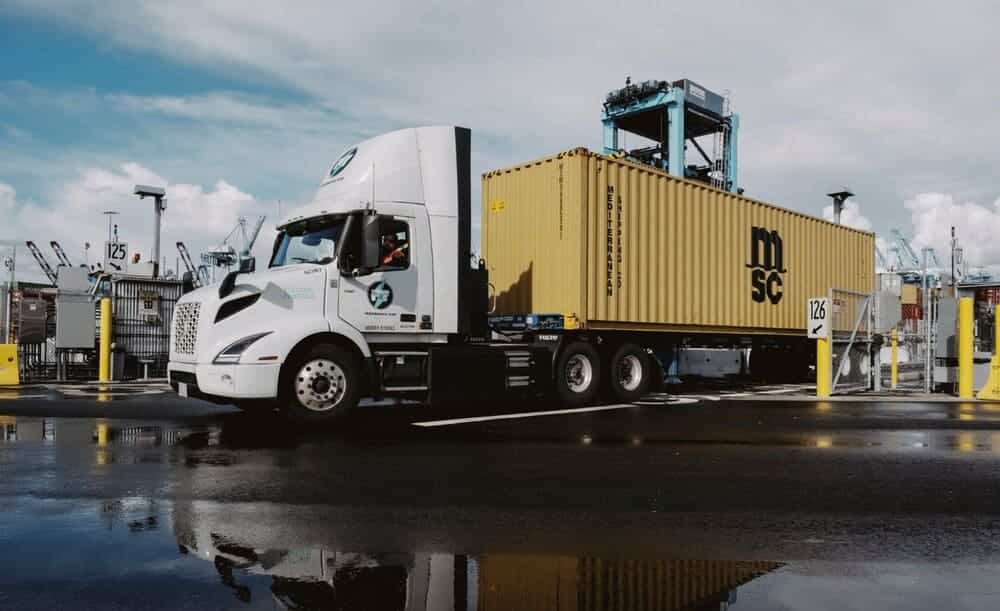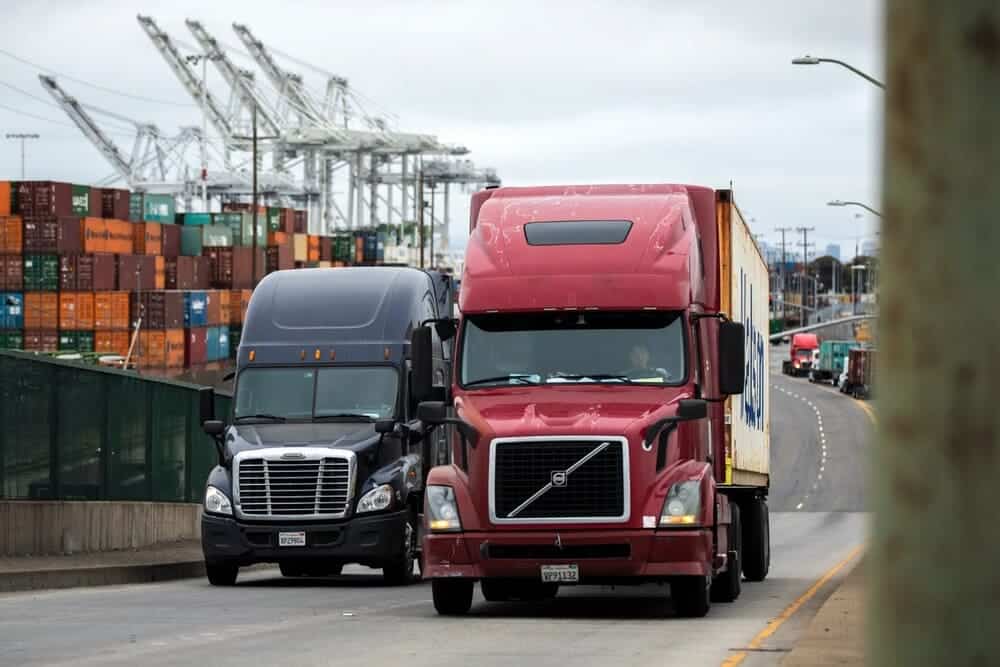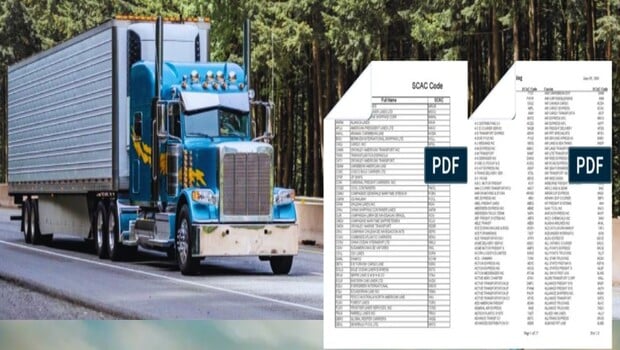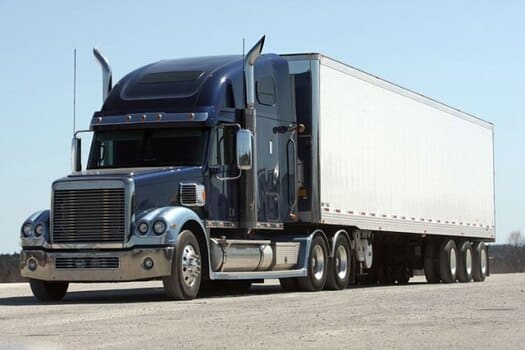

June 2, 2023

1368 Views

9 min read
What is Safety Audit in Trucking
Page Contents
In the United States, trucking companies are bound by safety regulations created by the Federal Motor Carrier Safety Administration (FMCSA). To uphold adherence to these regulations, one effective measure is the implementation of routine safety audits. Safety audits encompass a thorough examination of a company’s safety protocols, processes, and actions to identify any instances of non-compliance or potential safety hazards.
Motor carriers typically don’t anticipate audits, and most fail to prepare until it’s too late adequately. But having a solid understanding of the auditing process significantly increases the chances of achieving a favorable outcome if an audit does occur. At FleetCare, we’ll explain what you need to know about Safety Audits in Trucking.
The Safety Inspection and Safety Audit in Trucking
The Department of Transportation (DOT) safety audit serves as an educational module aimed at ensuring new carrier entrants possess the necessary knowledge and tools to operate safely and adhere to state and federal regulations. Therefore, all new entrant motor carriers, private and for-hire, intending to engage in interstate commerce must undergo this audit.

Presently, new carrier entrant safety audits are conducted electronically. The audit usually takes two to four hours. During this time, auditors ask 82 safety-related questions, which may include 18 questions about hazardous materials. The audit allows the Department of Transportation and the carrier to address non-compliance areas. While civil penalties are not imposed on motor carriers due to the audit, failing the safety audit can lead to the revocation of a carrier’s registration.
FMCSA Safety Audits
The Federal Motor Carrier Safety Administration (FMCSA), operating under the Department of Transportation (DOT), audits and oversees commercial motor vehicle industry safety regulations.
The Department of Transportation performs 3 primary types of safety audits:
- New Entrant Program: During the initial 12 months of operation for a motor carrier company, a safety audit must be conducted as a component of the New Entrant Program. The purpose is to verify the company’s compliance with applicable regulations regarding Federal Motor Carrier Safety and Hazardous Materials and record-keeping obligations. The audit is conducted to verify compliance before the company engages in long-term business.
- Targeted Audits: Companies that failed prior audits or disregarded driving regulations might have an increased Compliance, Safety, and Accountability (CSA) score. In such cases, the DOT may target these companies and mandate a safety audit to assess their compliance efforts.
- Compliance Audits: Compliance safety audits are conducted randomly or in response to reports of safety issues regarding a company or its fleet. Before the auditors arrive to conduct a compliance review, the company is typically notified by phone to provide some advance notice.

FOR COMPREHENSIVE FLEET
MANAGEMENT SOLUTIONS
Difference Between New Entrant and Other Safety Audits
The primary objective of audits is to ensure that companies take the necessary measures to maintain the safety of their drivers, cargo, and others on the roads. The outcomes of audits vary based on the specific assessment being conducted. Let’s explore the distinctions between a new entrant and other safety audits.
New Entrant Audit
There are two possible outcomes during a new entrant audit: pass or fail. Within 45 days of the review, you will be informed about the rating your company received. Certain factors may lead to an automatic fail rating; however, this does not automatically mean your business will be closed. You will be given an opportunity to take corrective actions.
- Pass: A pass rating signifies that your company complies with the requirements established by the Federal Motor Carrier Safety Administration (FMCSA). In the future, you may be subject to random audits or targeted reviews after being registered with the FMCSA.
- Fail: If your audit results in a failing score, you must submit a corrective action plan. This plan outlines the steps you will take to address the issues that caused the failure. You’ll be required to submit the proposal or follow through on it to avoid the loss of your registration with the FMCSA.
Safety Audits
Safety audits have three potential outcomes: satisfactory, conditional, and unsatisfactory. The safety audit results will be provided to you within 30 days. Here’s what each rating indicates:
- Satisfactory: A satisfactory safety rating shows that your company is committed to maintaining safety standards and has an excellent safety record.
- Conditional: A conditional safety rating implies that your company has not encountered any significant problems thus far. However, you must still fully comply with the FMCSA requirements, potentially leading to future safety issues.
- Unsatisfactory: An unsatisfactory rating indicates that safety problems have already been recorded for your company, and you need to adhere to the required standards fully. Following this rating, you will typically have between 45 and 60 days to improve your score, depending on the nature of your operations.

Similar to new entrant audits, an unsatisfactory rating in a safety audit does not necessarily mean the end of your business.
How the Safety Rating Is Calculated
The safety rating is determined by considering various factors, which include:
- Safety Management Controls: Your safety management controls are compared to those of similar companies to assess their clarity. Incidents, violations, and accidents indicate lax controls and can affect your rating.
- Regulatory Violations: The number and severity of regulatory violations play a crucial role in your audit evaluation.
- Driver/Vehicle Issues: The evaluation considers out-of-service drivers and vehicle violations, including the quantity and frequency of such occurrences.
- Roadside Inspection Violations: The frequency and severity of citations received by your drivers or vehicles during roadside inspections are considered during the audit.
- Vehicle Accidents: Hazardous material incidents and vehicle accidents are taken into consideration. The auditor examines the number of accidents per million miles driven and their trend over time.
- State Regulation Violations: Violations that align with both state regulations and federal laws are assessed based on their number and severity.
- Trends: Over time, the frequency and trend of violations your company has experienced affect your overall rating.
If your business is being audited as a new entrant, this applies. In that case, safety policies become even more critical since new companies may need a sufficient log of miles on the road. In addition, for new entrants, certain factors can automatically lead to a failure rating in the safety audit:
- Lack of Substance Use Regulations: Failing to implement drug testing, random drug tests, or allowing drivers to operate vehicles under the influence of drugs or alcohol will fail.
- Unqualified Drivers: Failure to pass the audit often happens if your drivers lack a commercial driver’s license, are medically ineligible, or have been disqualified from driving.
- Inadequate Operator Record Maintenance: Failing to maintain proper insurance on vehicles or having drivers who maintain log books will ensure the review is completed on time.
- Driving with Inspection Violations: Failure to repair vehicles that fail safety inspections will result in failure in the new entrant review. Additionally, operating vehicles that are out-of-service or disregarding the issues can lead to an immediate failing grade.
If your company receives a failing rating as a new entrant, don’t worry. You must create a plan to address the problems and undergo a new audit. Completing the second audit is necessary to obtain FMCSA registration for your business. With it, you can operate your fleet.

How to Do Safety Audit in Trucking
These evaluations are crucial for the government to ensure the safety of all drivers on the road, including your own. Although gathering the necessary materials may seem overwhelming, you can seek assistance from an expert.
To ensure your preparedness, gather the records that demonstrate your company’s compliance with FMCSA regulations. Show your commitment to ensuring your drivers’ preparedness for safe driving. Additionally, demonstrate your promptness in addressing any fleet issues that may arise during inspections. You should be well-prepared for the safety audit if you have the necessary paperwork, which includes:
- Driver qualification files and documents
- Vehicle documents
- Proof of insurance
- Drug and alcohol testing program information
- Accident register
Safety Lane Inspection for Trucks
A “safety lane inspection for trucks” generally contains any safety inspection mandated by the Department of Transportation (DOT) or state authorities. At the federal level, a qualified inspector will inspect all Commercial Motor Vehicles (CMVs) annually, including each vehicle in a combination. These inspectors are typically DOT-trained/certified inspectors or state police officers. The inspection aims to identify violations outlined in federal regulations regarding the minimum requirements for CMV Step, Deck, and Handhold.
To be deemed roadworthy, a CMV must have each of its listed components, parts, and accessories pass inspection within the past 12 months. Moreover, documentation of this inspection must be kept inside the vehicle.

There are six main types or levels of inspections that may be encountered:
- North American Standard Inspection: The inspector examines driver documents and checks for substances like drugs, alcohol, or hazardous materials being transported. Driver documents include the driver’s license, Driver/Vehicle Inspection Report, daily log/hours of service, and medical examiner’s certification/waiver. In addition, the inspector assesses various vehicle components, such as seatbelts, cargo securement, brakes, brake lamps, and several more.
- Walk-Around Driver and Vehicle Inspection: This inspection is similar to the North American Standard Inspection. However, the inspector does not check parts that require them to go underneath the vehicle.
- Driver-Only Inspection: This inspection involves a thorough examination of the driver’s license, daily log, medical examiner’s certification, and incident history, as well as the Driver and Vehicle Inspection Report and any applicable Hazmat (Hazardous Materials) requirements.
- Special Inspection: This is conducted as a one-time inspection focused on a specific feature of the CMV. It is often carried out to support or refute a previous claim regarding the CMV, for a study, or to investigate suspected trends.
- Vehicle-Only Inspection: This inspection includes all the aspects addressed in the North American Standard Inspection, excluding the driver’s presence.
- Enhanced NAS Inspection for Radioactive Shipments: This inspection applies to all CMVs transporting radioactive material in “highway route controlled quantities.” It includes all North American Standard Inspection components and further assesses specific shipments-related radiological requirements, inspection procedures, enhancements, and out-of-service criteria.
Preparing for a Safety Lane Inspection
To prevent major safety issues, performing a thorough walk-around inspection before each trip is advisable. By doing so, you can identify and address any problems or potential safety hazards in advance. For example, take a close look at your tires and ensure they are in good condition, and inspect all your lights to ensure they are functioning properly. Additionally, it is important to quickly address any cracks on your windshield, regardless of size.
To inquire more about the Safety Audit in Trucking and ways to ensure your company’s successful passes, contact the experts at FleetCare.
Sign up for Exclusive Trucking Tips
Test







